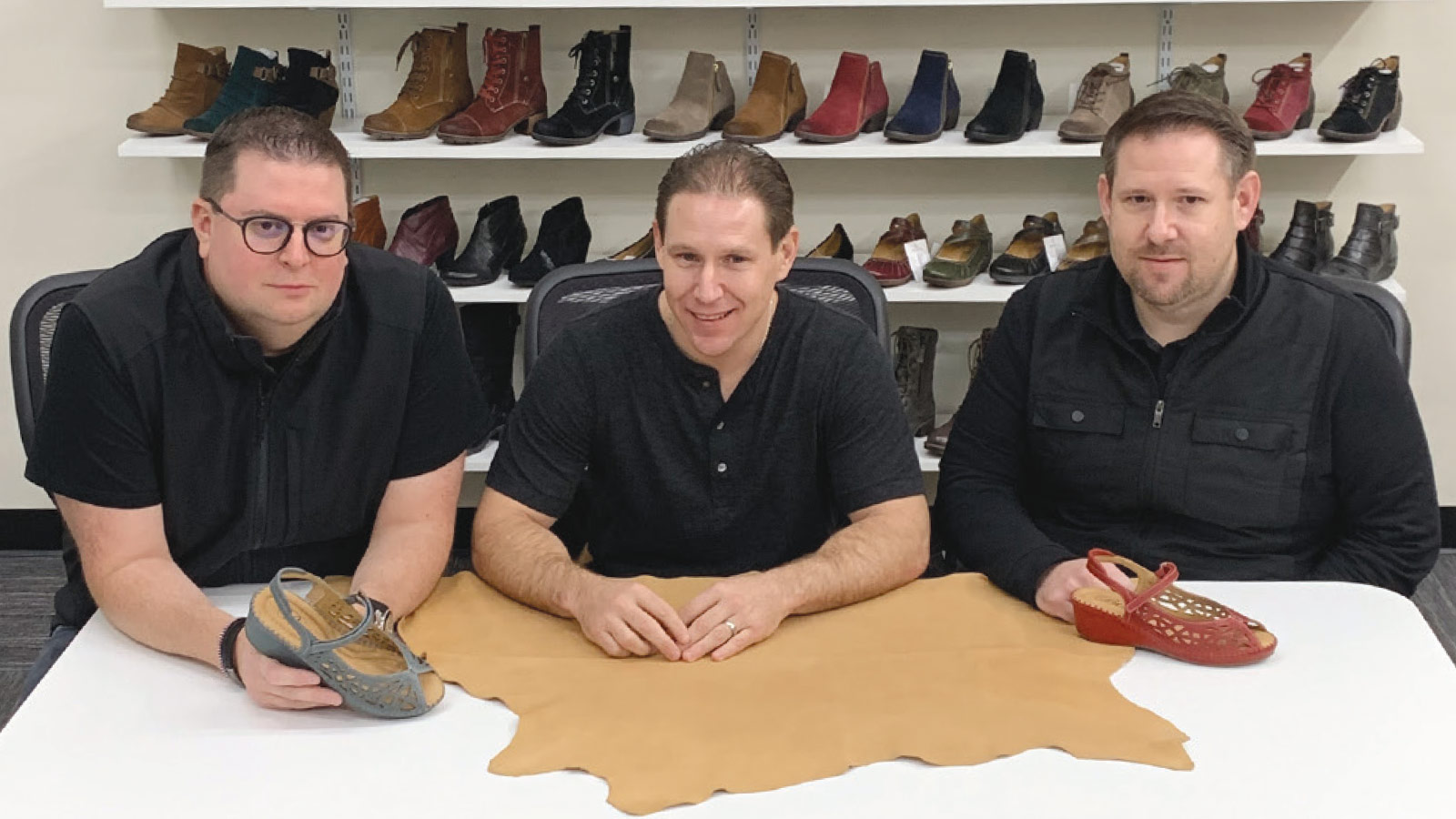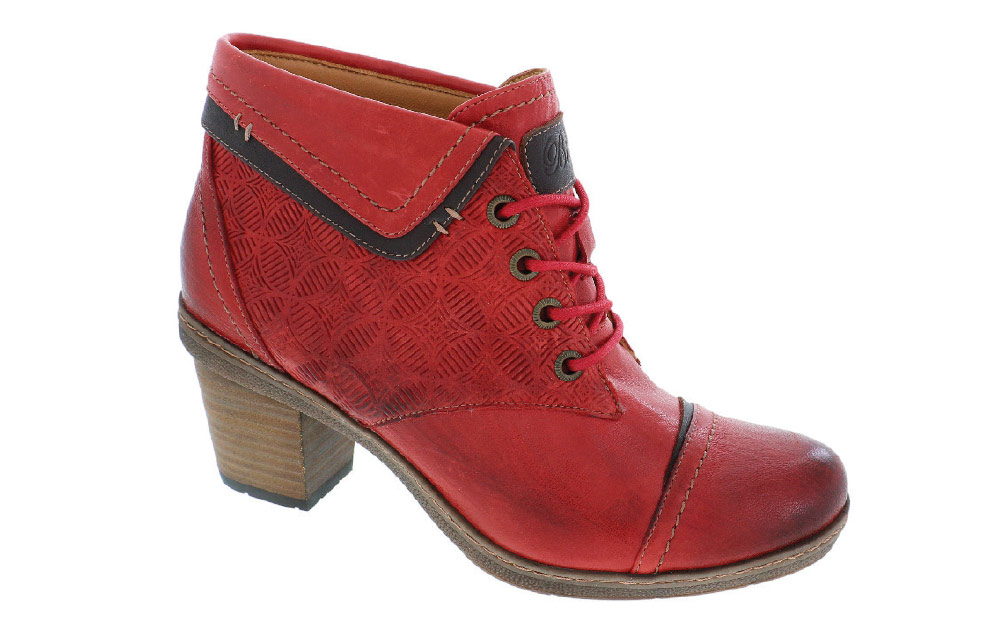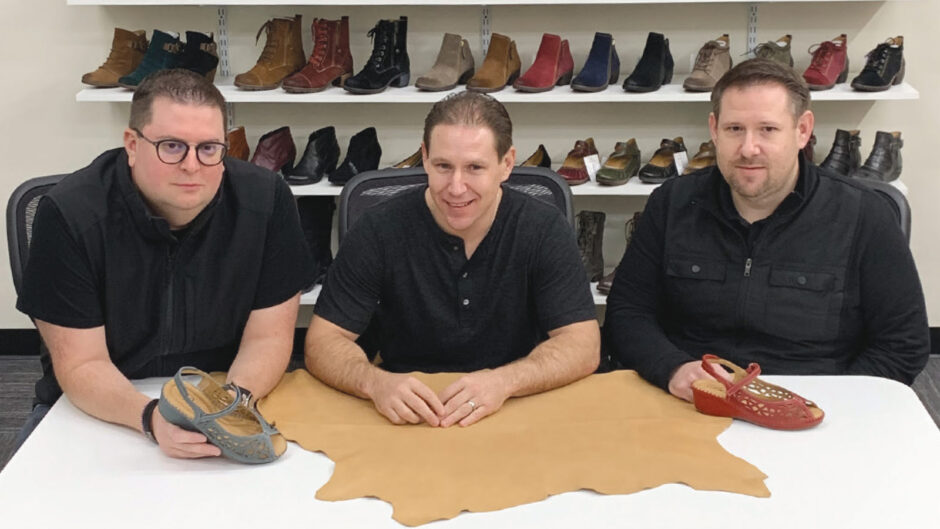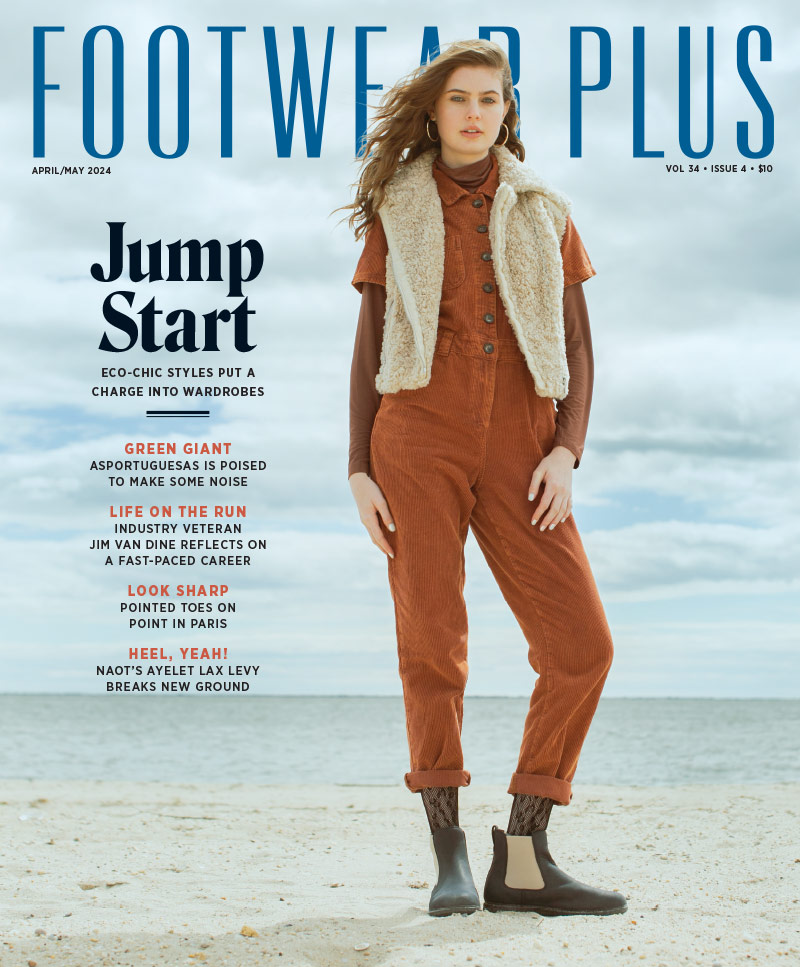
A parade of new brands march onto the playing field every year. Some are introduced by wide-eyed industry newbies. Others are spun out of conglomerates run by seasoned execs armed with well-oiled backroom machines. Though they all believe their babies are destined for great things, the historic success rate for new brands is grim—and it’s getting tougher to survive amid consolidation (less shelf space) and buyers’ refusing to take risks. Too often newcomers fail because the products are “me too” (at best), the price is wrong and the game plan would make Bill Belichick cringe.
Not so with Biza, say Dave and Danny Astobiza, co-owners of Sole Desire, the Northern California-based chain of 16 women’s comfort stores. The Biza blueprint is not based on whims or wishes; the Astobizas claim to have done their homework and put together a solid plan backed by what they believe is a dream team of partners. Biza falls under a new standalone company, Tribute Group, that includes industry sourcing veteran Brian Jensen as a partner. In addition, Simco Imported Shoes, distributors of Arcopedico, are managing sales and distribution.
“It’s a three-part team,” Dave says. “We would only go into the wholesale business if we had great sourcing and distribution partners. Without Brian and Dan, Sydney and Doug Simas (owners of Simco), we’d never be in this position. They are experts at what they do. It takes a big and experienced team to launch a brand successfully.”
That launch begins in earnest this fall. (It will follow a soft launch to approximately 100 premium independent dealers this spring.) The Astobizas believe the timing is right and the product is spot-on. Biza is built for the long haul. The brothers are not dabbling in wholesale as a side gig to their retail empire. They have every intention of Tribute Group becoming a wholesale operation thriving 20 years down the road—the same way they’ve followed in the footsteps of their parents and expanded Sole Desire into the multi-store chain that it is today. “We want to build something that is sustainable to leave to our families,” Danny says. “We’re not looking for the quick hit. It’s just not our mentality.”
Secret Sauce
The Astobizas’ experience in the retail trenches is a key component of the Biza recipe. It’s a formula they started working on about 10 years ago when the brand made its private label debut within Sole Desire stores. They’ve been tweaking and perfecting it ever since. Their sales floor experience coupled with working in every facet of running a retail operation gave the brothers a front-row seat to what works and what doesn’t with regards to new brand launches. Of course, that starts with product. “You have to sell the eyes first—the shoes have to look nice, because if they don’t, no one will want to even try them on,” Danny explains. “Then they have to pass the touch-and-feel test—we have to sell the hands. And then we have to sell the feet—the shoes have to feel as great as they look.”

Hitting on that sensory trifecta starts with a focus on fit and comfort. Biza’s European construction (narrower in the heel and wider in the forefoot) is then Americanized with a five-millimeter density memory foam insole layered atop PU, EVA or cork midsoles. Even styles with removable footbeds feature the comfort lining. “We don’t want to be an orthopedic brand, but we want some of those comfort attributes,” Dave says. “The DNA of the brand is quality materials and constructions with proper cushioning and instep support. We make good-looking shoes as comfortable as they can be.” That includes heel heights up to two inches. “The comfort and fit is going to have the same DNA as our flat styles,” Danny says. “We can go up to 1.5 to 2 inches on heel heights, and that’s still more comfortable than comparable product on the market.”
Aesthetically, Biza is understandable fashion spiced up by little details and extras. Think hand-burnished leathers, embossing, etching and laser cut-outs. In terms of the Fall ’20 collection, the Astobizas say short boots are still driving the business, and Biza will feature an array of styles in burnished leathers, nubucks and soft suedes. In addition, a casual sneaker collection is expected to draw interest. Whiskey tan, blue tones and burgundy are popular color stories with black still the “meat and potatoes” of the palette. The suggested retail price range is $130 to $200, with the bulk running between $139.95 and $160.
Biza design elements also stem from the Astobizas having served the end consumer for years. They know what works. “The fit features of a shoe—like an inside zipper even on a lace-up boot, stretch Gore inserts and Velcro adjustments—dramatically help the fit and therefore help make a sale,” Dave says. “We try to incorporate those aspects into as many of our shoes as possible.”
It helps that Jensen is up on all the latest manufacturing techniques to bring unique design elements to the forefront. “There’s nothing better than having a perfectionist making shoes for you,” Dave says. “The amount of design details that you can add today are amazing—these newer processes give us a distinct look that allow us to sit side by side with great brands, where we have our niche and they have theirs.”
In addition to product features and benefits, Biza offers several behind-the-scenes, retailer-friendly attributes as well. For example, the brand is Euro sizing, making it 20 percent more profitable, according to Danny. “It’s easier to control,” he says. “You don’t get bogged down with all that extra inventory, which is a huge benefit.” In addition, some styles will be available open-stock, and a meaningful percentage of the line features removable insoles to address the all-important orthotics and insoles category. “Those $40 to $80 add-on sales might be the difference between a retailer being successful or not at the end of a year,” Dave says, adding, “It’s just another example of the little things where Biza can help—like starting out at keystone plus 15 to 20 as well as additional pre-season order incentives to get even better margins.”
The price points are designed, in part, to address the decrease in overall store traffic. A higher average price point helps counter that decline, Danny says. “Selling a shoe for $5 or $10 more could be the difference between making money or not at the end of the year,” he says. It’s another reason why those design extras are incorporated into Biza—to justify the added investment by consumers. “We’re not trying to take money out of the shoes; we’re adding features and value into them,” Danny says. “Our industry doesn’t need another cheap shoe. It needs quality.”
Addressing the Elephant
It’s an open market. Anyone can (try to) launch a wholesale brand. But just as there are plenty of retailers none-too-thrilled about wholesalers expanding their direct-to-consumer (DTC) sales efforts, is Biza encroaching on their turf? The Astobizas are straightforward: They have no choice. As independent retailers, they say survival in the digital shopping age depends on finding new ways to differentiate the merchandise mix as well as new revenue streams. “Every single independent shoe retailer has to figure out a way to survive, and that starts with offering your customers something unique,” Dave says. “A comfortable shoe used to be unique—and we’ve made our living off that premise for years—but today you can basically buy any shoe, at any time, for the lowest price, so it’s up to retailers to find something new and different that won’t be found all over the internet.”
Biza’s distribution will focus on premium independent retailers, who currently aren’t allowed to sell the brand on Amazon Marketplace. The distribution plan is clean, less complicated and ultimately designed to be more profitable for both retailers and Biza, Dave says. “When a product is clean online, we sell more of it in our stores. We see that every day,” he says. The Astobizas want to level the playing field for their retail partners. “Independents have to be able to compete,” Dave adds. “Otherwise, it’s like going into a boxing match where the opponent has brass knuckles.” With the internet like the Wild Wild West in terms of pricing, the Astobizas don’t want 100 dealers selling Biza on Amazon, because there’s no way to control it. “Even if you hired someone to police it, you can’t,” he says. “It’s why having a strong MAP policy, fewer distributors online and keeping Amazon at bay are all part of our distribution plan.”
What’s more, the Astobizas report that the draw of exclusive product in stores is increasing of late. There’s been a growing trend, especially in women’s, where consumers want their in-store shopping experience to involve discovery. “Our customer rewards us for that—they like the fact that they’ve found stuff that they haven’t heard of before,” Danny says. “They want us to be more of a boutique.”
The Astobizas believe (most of) their wholesale partners are rooting for their wholesale venture to be a success. Beyond that, it’s just the way of the world today. “It would be crazy for us to complain if one of our vendors sells direct just as it would be crazy for them to complain about a retailer going to Micam to find a private label partner so they can sell something that’s not found everywhere,” Dave says, noting that they haven’t received any backlash from their vendors to date. “Business is hard and, at the end of the day, we all have to put food on the table,” he adds. “Retailers face enormous challenges today and we’re trying to find solutions to some of them. But we also know that independents need to sell all their brands to be successful. That’s why this is not a ‘retailers against wholesalers’ scenario. We’re all in this together and we all need to be successful because we share the same body.”
The industry also needs stores like Sole Desire to survive. “With Amazon’s sales up 18 percent this holiday and mobile shopping’s growth, brands need great independent retailers,” Dave says. “We need places where consumers can touch and try on, and we can explain the benefits of premium product.”
It’s one of the key reasons why Simco was brought in to manage sales and distribution. Simco has great relations with leading independent retailers nationwide. “Partnering with Simco takes us to a whole other level—that’s how we got 100 accounts in our soft launch,” Danny says. “Our product was well-received, but Simco’s trust factor was also key.”
Growth not Greed
Just what are the growth expectations and goals for Biza? The Astobizas are planning for sustainable, long-term growth, but their team isn’t seeking world domination. Unlike many publicly owned companies, Tribute Group is not under the gun to show year-on-year growth, no matter the consequences. “We’re not answering to a bunch of investors,” Dave says. “It’s not growth at all costs. Besides, just because you do more volume doesn’t necessarily mean you make more money. What’s wrong with having a smaller yet profitable business?”
There are no hard-set financial benchmarks that Biza must hit. “The goal is to keep making great products and to listen to our partners and figure out ways we can both succeed,” Danny says. “That’s how we’ve seen it done right for years and we believe if we do the same, it will come for us too. It’s really not much more complicated than that.”
The Astobizas believe that business will come, in a sustainable form, so long as Biza supports its retailers properly and gives them what they need, which goes beyond product. “We believe the independent channel is starving for a new brand, but we must be set up to be a lot more than just product,” Danny says. “Independents today need strong margins, stock capabilities and good-looking shoes.”
Indeed, the Astobizas believe Biza’s time is now. “We have the fit, design and sourcing down,” Danny says. Dave also cites a collision of fate, experience and desire that has brought the team together. The shoe stars have aligned. The Astobizas first crossed paths with Jensen about 10 years ago, but it wasn’t until they met again about five years later, when Sole Desire’s private label program was more established, that they envisioned greater potential. It wasn’t long after that the Astobizas and Jensen discovered they came from very similar independent retailer backgrounds. (Jensen’s father owned a shoe store.) They also learned that both their fathers had passed away within a year of each other and Jensen’s sourcing company, Tribute, was named in honor of his father. The Astobizas launched Biza in tribute to their father. “We have the same roots, a shoe synergy and we just hit it off,” Dave says, noting that many aspects must come together for a partnership to succeed. “It’s the perfect fit as far as all the factors necessary to make this venture a success.”




